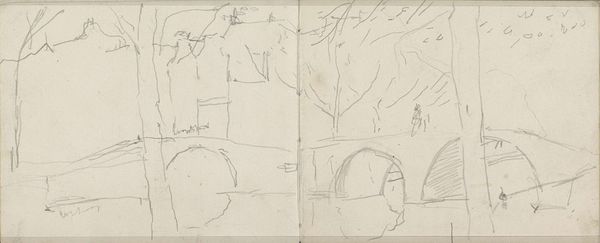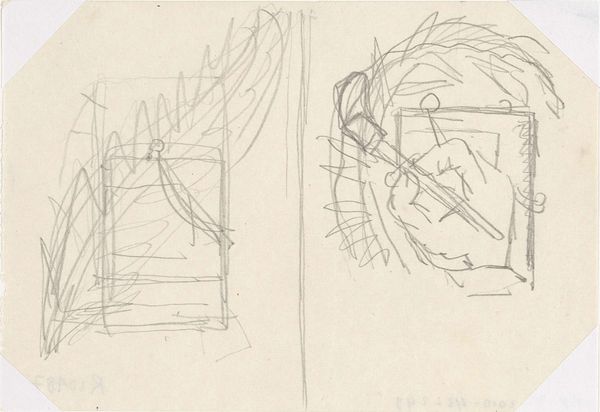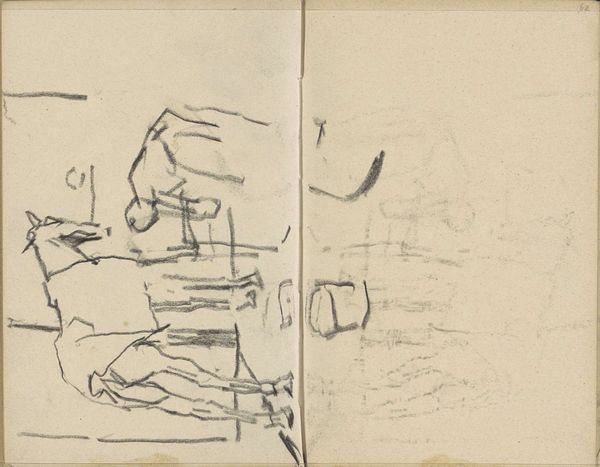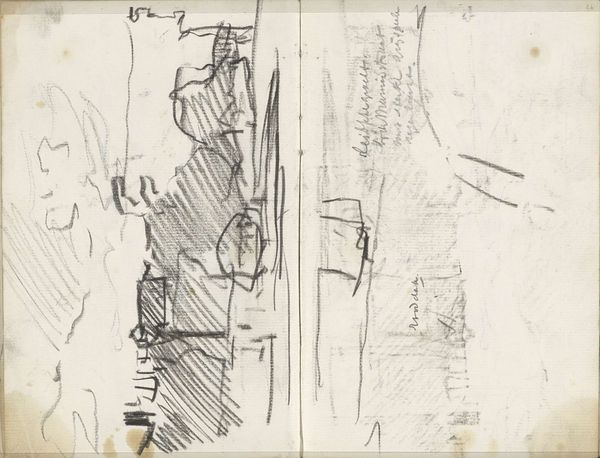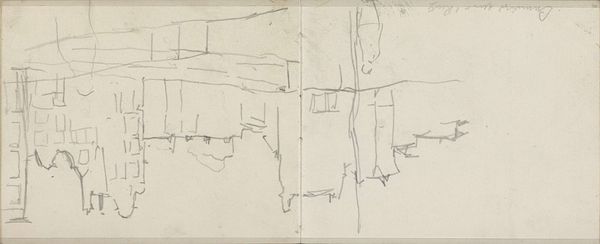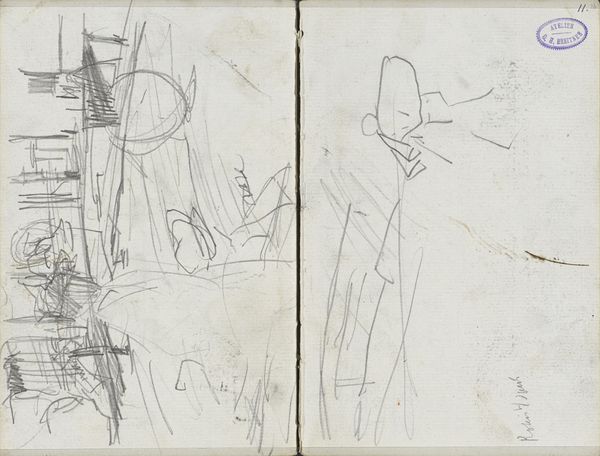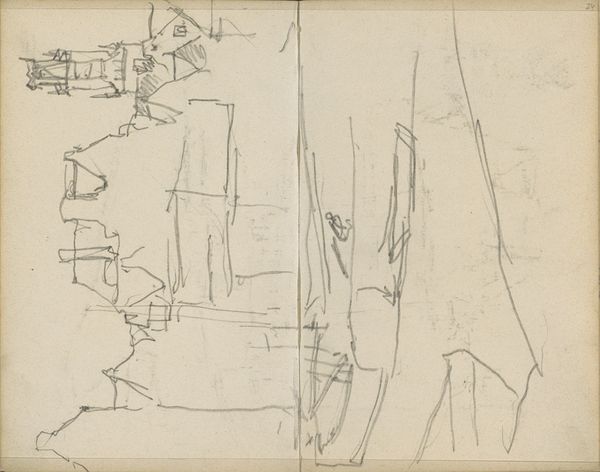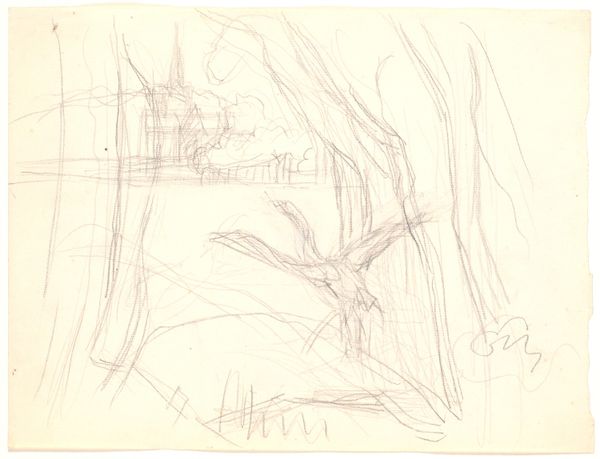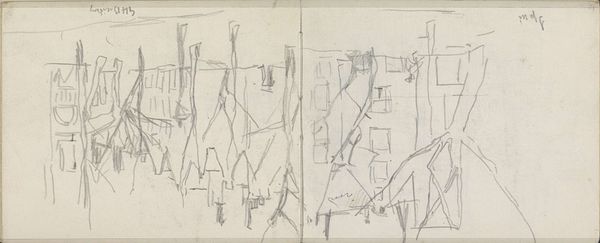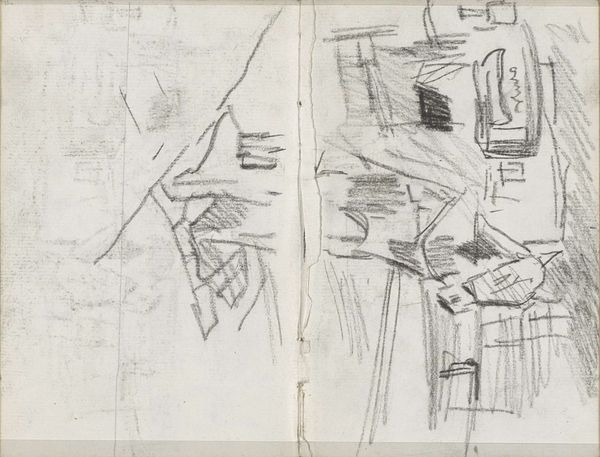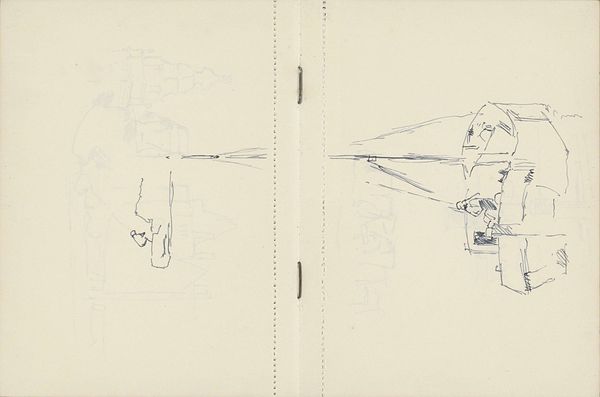
drawing, paper, pencil
#
drawing
#
dutch-golden-age
#
impressionism
#
landscape
#
figuration
#
paper
#
pencil
#
line
#
cityscape
Copyright: Rijks Museum: Open Domain
Curator: Immediately, there's a feeling of urban isolation, don't you think? Editor: I agree. There’s something stark about it. The drawing is from circa 1886 to 1891. George Hendrik Breitner captured this city view in pencil on paper, titling it Figuren langs het water, or Figures by the Water. It's part of the Rijksmuseum collection. Curator: Yes, "figures" is doing a lot of work here, isn’t it? They're barely there! Ghostly and ephemeral. It's like they are placeholders within a quickly sketched environment. What’s interesting is that, even with such minimalist form, the city becomes tangible. It brings up discussions of labor, particularly in port cities like Amsterdam during this time. Editor: Absolutely. I think this aesthetic captures something very specific about how laborers and marginalized peoples are so often rendered invisible or as merely contextual—both in life and in artistic representation. But you have to wonder what informed Breitner's view, which clearly isn’t heroic. Curator: His ties with the art circles involved with the Hague School are worth bearing in mind, for example. It points towards the evolution of seeing and showing everyday life without the theatrical elements associated with previous art movements. This aesthetic links to a certain artistic positioning too. By capturing seemingly ordinary moments and leaving elements unfinished, there’s the sense of an experience rather than an imposition of the artist. Editor: Right, and the open-endedness also allows us to project contemporary concerns onto it. Are these figures bystanders? Are they waiting? What power dynamics exist on this waterfront? The minimal information sparks so many ideas and that’s where art historical contextualisation really makes this image speak today. Curator: Precisely. I find myself thinking about who defines what constitutes art that truly matters. There is inherent power that museums have to rewrite or uphold historical narratives through displaying art and its relative cultural, social and political interpretations. Editor: So much weight given to the art object; it shifts the axis from author to spectator, doesn’t it? I appreciate how this very unassuming pencil sketch sparks conversations about access, perspective, and power, really echoing what museums are trying to do today.
Comments
No comments
Be the first to comment and join the conversation on the ultimate creative platform.
